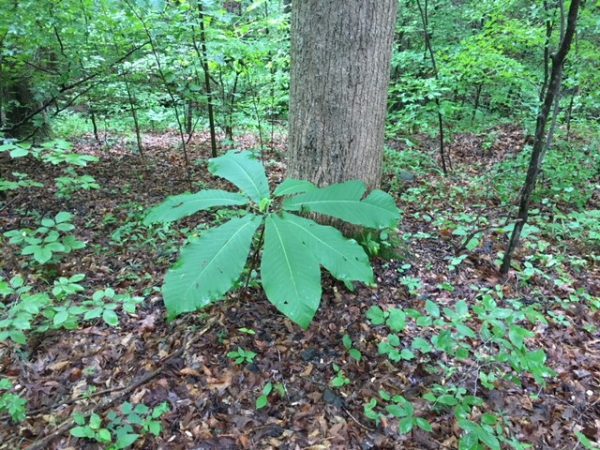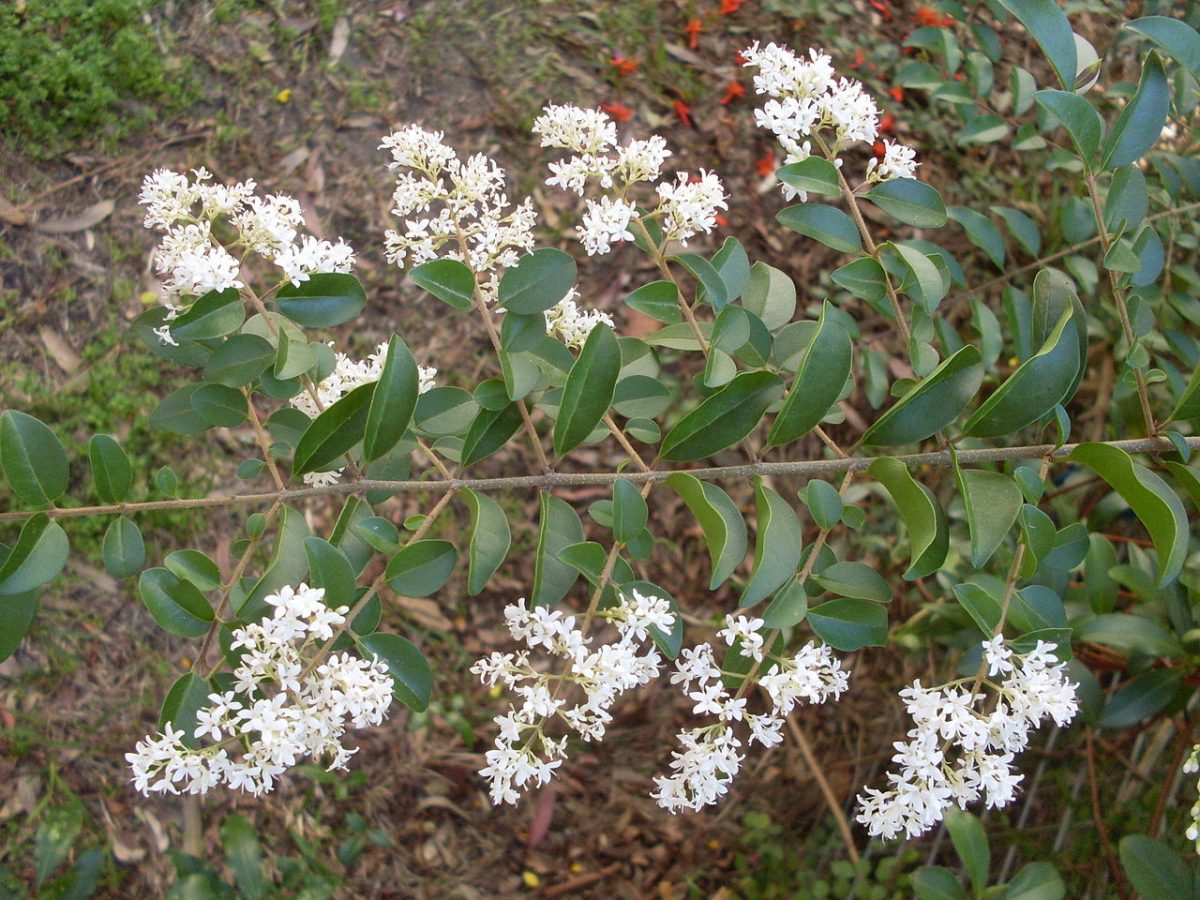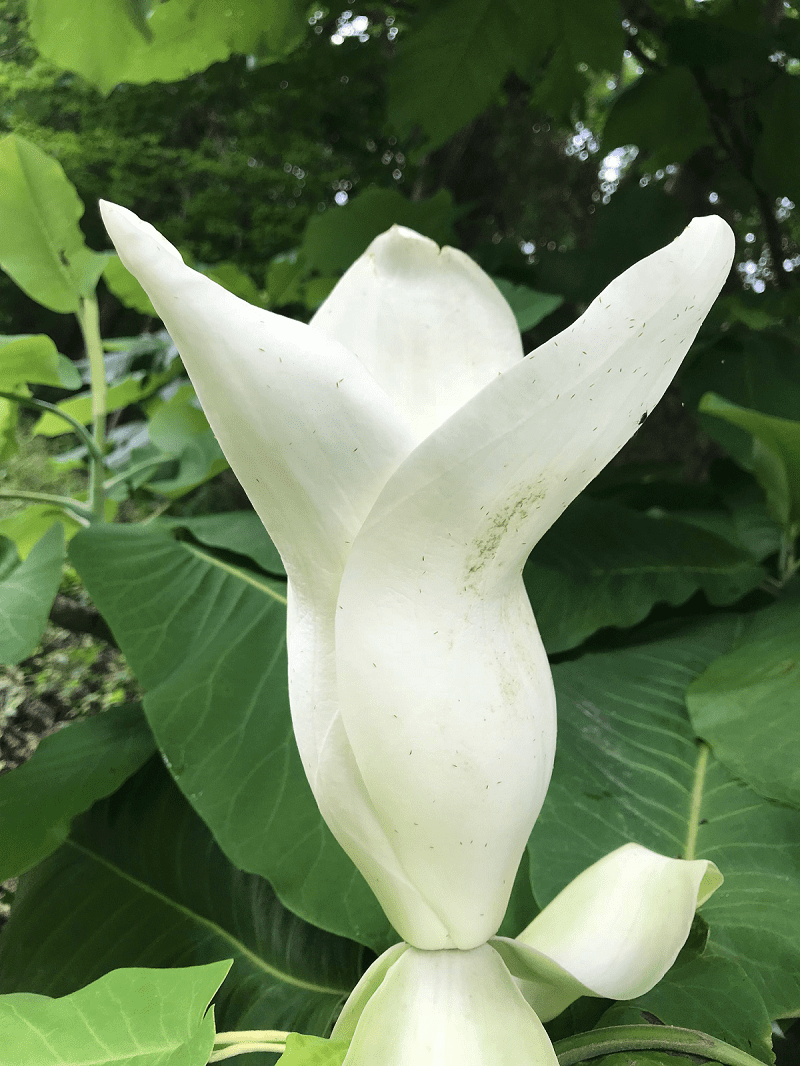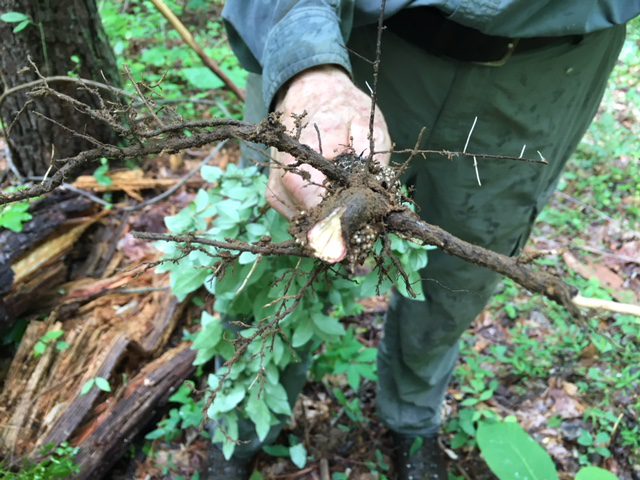He’s (almost) winning a war with invasives

Tall and slender even into his 70s, Haywood Rankin claims he was never much of an athlete. He says he lacked the speed and agility needed for football or basketball and the hand-eye coordination for baseball or tennis. After college, he spent time in Oxford, England, and finally found a sport that fit his skill set. “Rowing,” he says, “is all about endurance.” Rankin realized his true talent was dogged persistence.
A career in the State Department took the Gaston County native to diplomatic hotspots in Africa and the Middle East. After retiring in 1998, he and his wife, Sabine, returned to his boyhood home, a rolling tract of Gaston County land along the South Fork of the Catawba River known as Redlair. The woods he’d explored in his youth somehow seemed different. Something had changed. Something was wrong. It seemed Thomas Wolfe was right – you can’t go home again.
Rankin experienced the environmental equivalent of being “woke.” Aldo Leopold described this in his classic book, A Sand County Almanac: “One of the penalties of an ecological education is that one lives alone in a world of wounds. Much of the damage inflicted on land is quite invisible to laymen.” Rankin began to understand invasive species were responsible for the wounds inflicted upon Redlair. He soon found a new outlet for his tenacity.
Invasive, non-native species are one of the biggest threats to biodiversity, along with habitat loss. Invasive plants can quickly crowd out native plants, which in turn can affect the animals and insects that evolved to use those native plants as food.
 Privet (Ligustrum sinense) is a common but invasive landscaping shrub that has infiltrated more than 3 million acres of U.S. forestland, as well as parks and other natural areas. Photo: John Tann from Sydney, Australia (Small leaf privet branch Uploaded by berichard) [CC BY 2.0 (https://creativecommons.org/licenses/by/2.0)], via Wikimedia Commons
Privet (Ligustrum sinense) is a common but invasive landscaping shrub that has infiltrated more than 3 million acres of U.S. forestland, as well as parks and other natural areas. Photo: John Tann from Sydney, Australia (Small leaf privet branch Uploaded by berichard) [CC BY 2.0 (https://creativecommons.org/licenses/by/2.0)], via Wikimedia Commons
Rankin’s first “campaign” was against a 10-acre patch of kudzu (Pueraria montana) on a steep hillside that had long ago been terraced by desperate farmers. Perhaps they’d been enticed by a generous offer from the Soil Conservation Service. In the 1930s, the agency gave farmers $8 an acre to stabilize eroding fields with kudzu. During the Great Depression, that must have been a financial windfall. No wonder the U.S. Forest Service estimates kudzu now covers 250,000 acres of forests across the Southeast, with twice that amount marring urban and suburban landscapes.
Over the course of five years Rankin methodically attacked this patch as well as smaller areas totaling another 10 acres. He worked “plant by plant, root by root, rootlet by rootlet.” Fifteen years later, he still finds the occasional sprig. He scans the forest for them in early November, after the trees have shed most of their leaves but before a hard freeze wilts the kudzu. “You never completely win a war with invasives,” he says.
Next, he tackled autumn olive (Eleagnus umbellata) and privet (Ligustrum sinense). While privet lacks the notoriety of kudzu, it’s far more widespread, infiltrating more than 3 million acres of forestland. On the bright side, it generally grows in moist alluvial soils, so it can often be removed by a hand tool known as a weed wrench. Autumn olive, also known as “Ugly Agnes,” tends to invade the uplands, where soils are tight and dry. Even worse, the root is fragile. Digging them up is futile. Instead, Rankin cuts them down with a handsaw or loppers then paints the stump with herbicide. He targets these evergreen shrubs in winter, when they’re easy to spot in a deciduous forest.
In Rankin’s opinion, periwinkle (Vinca spp.), wisteria (Wisteria sinensis) and wintercreeper (Euonymus fortunei) are the most pernicious invasives. They creep under the leaf litter, making them difficult to spray. Periwinkle roots every few inches, making it almost impossible to pull. In comparison, English ivy (Hedera helix) is a relative pushover.
 The flower of a bigleaf magnolia, about to open. Photo: Amy Grissom
The flower of a bigleaf magnolia, about to open. Photo: Amy Grissom
Invasive plants never rest, and neither does Rankin. He walks miles of trail every day, using his trusty elm walking stick to clear the paths of debris. He’s especially fond of areas with mature forest where there are no invasives. They spur him on to work in other areas. On his daily rounds, he often carries clippers or loppers, a bottle of herbicide or a backpack sprayer. No fan of ATVs, he prefers to use the two antique Fordson tractors his dad bought in the 1950s when he needs to ferry heavy supplies to remote portions of the 740-acre property.
Having such a large tract of conservation land a half-hour from Charlotte is remarkable enough, but it’s also home to the state’s most magnificent population of bigleaf magnolias (Magnolia macrophylla). Renowned French botanist Andre Michaux first identified the species in Gaston County in 1795. Since then, it has been documented in only a handful of other N.C. counties, mostly in the Catawba River valley. With leaves up to 3 feet long and a foot wide, these deciduous, understory trees lend a tropical feel to an otherwise typical Piedmont hardwood forest. The strappy white blossoms are equally enchanting, punctuated with a deep purple spot near the base of each petal.
Redlair is also a recovery site for Schweinitz’s sunflower (Helianthus schweinitzii). Rankin seems to appreciate this endangered species that grew in the once-vast Piedmont prairies, but he doesn’t really like the intrusion of machinery required to do prescribed burns to maintain the prairies, and he hates aggressive firelines. Both can be conduits for the introduction of invasive species.
“I don’t know much about growing stuff,” Rankin says, with a sly grin. “I’m just a killer.” His wit and modesty belie the fact that he has cultivated a large-scale garden, one of bigleaf magnolias and other natives previously suppressed by invasives. The N.C. Plant Conservation Program acquired Redlair in 2014, but Rankin still tends the property. He sends the agency a weekly summary of his activities, a document he refers to as a hebdomadal. A word as rare as the persistence of the man who uses it.
 Haywood Rankin demonstrates how easily the root of autumn olive (
Haywood Rankin demonstrates how easily the root of autumn olive (
Eleagnus umbellata) breaks, making it difficult to pull the plants and be rid of them. Photo: Ruth Ann Grissom
Writer Ruth Ann Grissom grew up on a farm in Montgomery County and earned degrees in journalism and social work at UNC Chapel Hill. She divides her time between Charlotte and the Uwharries.